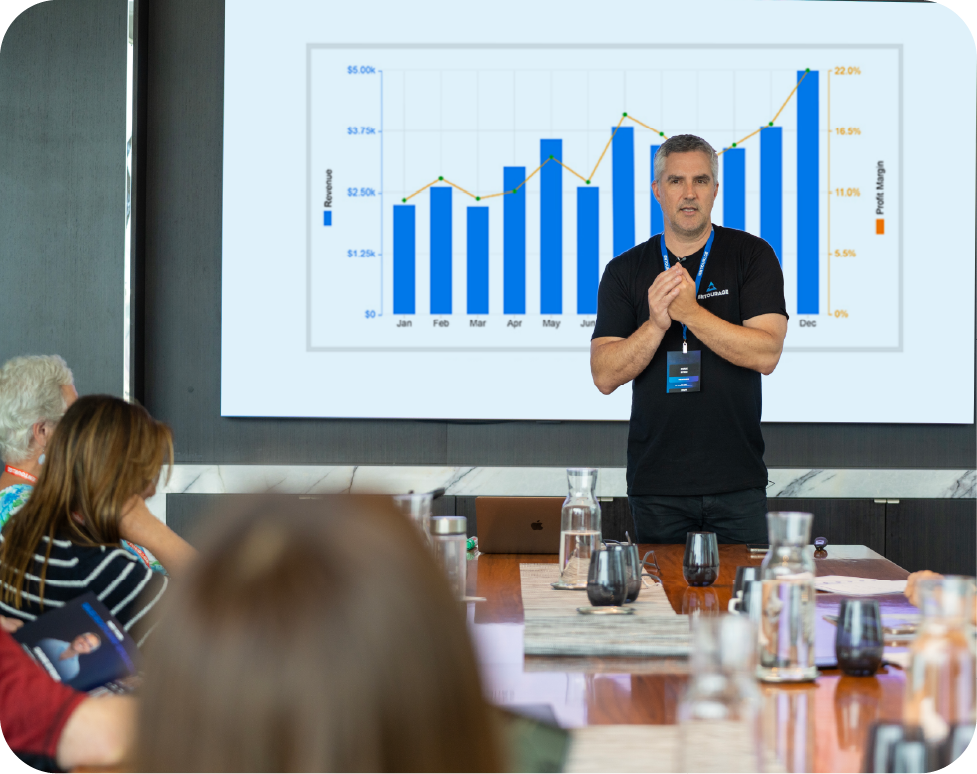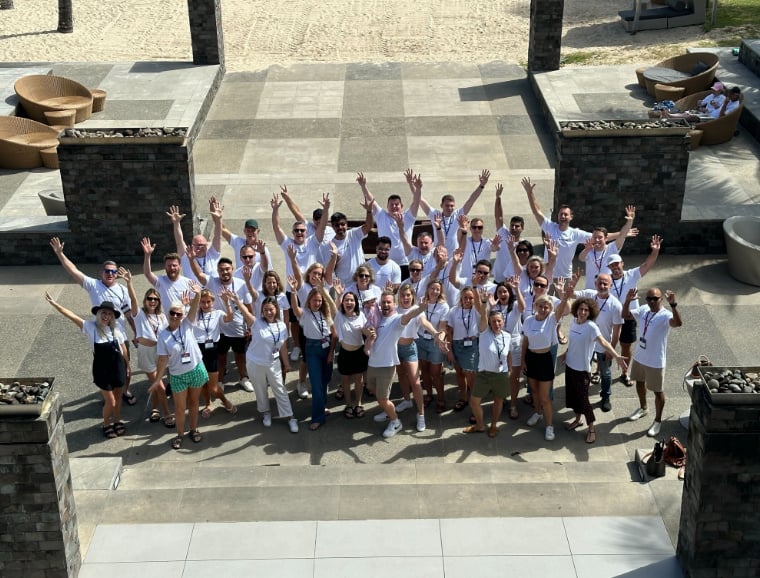Think of web development as the backbone that keeps the sprawling internet standing strong – a blend of artistry and security in an ever-broadening universe. Staring into what next year holds for us, making a website isn't enough anymore. Today's developers are busy knitting engaging digital stories that cater not only to what people want now but also anticipate tomorrow's trends for companies too. We're about to dive into where the web is headed next. For devs wanting to ride the wave rather than get swept away, staying updated is crucial.
The Evolving Web Development Landscape
Back in the early 2000s, web development was a straightforward process. For anyone diving into web design or functionality improvements today - remember this trio: HTML sets up your foundation; CSS makes everything pretty; and JavaScript brings it all to life. But as technology has galloped forward, so has the complexity and capability of web development. In 2024, it's no longer just about static websites; it's about full-fledged web applications that are intelligent, integrated, and immersive.
As developers, our toolkit's grown in ways we never imagined, and what we do has changed right along with it. It’s on us to craft the online spaces folks love, make sure they’re fun to explore, and protect user info like it’s our own secret diary. Staying updated with trends and technologies isn't just advantageous—it's mandatory. Whether it's harnessing the robustness of Progressive Web Apps (PWAs) or adapting to AI-driven design, every developer must be plugged into the zeitgeist of current and emerging web technologies.
The Rise of Progressive Web Apps (PWAs)
A cornerstone of modern web development, PWAs represent a hybrid between web pages and applications. They're accessible via browsers but offer the functionality and user experience of an app. With their ability to work offline, load quickly, and send push notifications, PWAs make the web more accessible and convenient.
Users now demand more because these apps have shown them there's more out there. Users now demand app-like experiences from web pages—swift, responsive, and feature-rich. Progressive Web Apps are like chameleons, seamlessly adapting to any screen and network condition thrown at them.
The Importance of Mobile-First Design
The mantra 'mobile-first' isn't new, but its importance has ballooned in 2024. With the majority of internet traffic now hailing from mobile devices, designing for smaller screens first is not just sensible—it's vital. Our world spins more around mobile screens with each passing day. Catching onto this trend, Google champions the cause of mobile-friendly sites.
Mobile-first design in 2024 means thinking about touch interactions from the get-go, optimizing images and media for rapid loading, and considering the mobile context in every design decision. It's not just about making sure things work; it’s testing how well websites can change and fit perfectly on any gadget, big or small.
AI and Machine Learning in Web Development
Artificial Intelligence (AI) and Machine Learning (ML) have shifted from being just trendy terms to core elements of cutting-edge web development. Developers now regularly integrate AI API solutions to power everything from dynamic recommendations to intelligent automation. AI takes the lead in tailoring content just for you, making sure every digital interaction feels like it's crafted to your likes and needs while also handling those repetitive tasks nobody enjoys. Imagine machine learning as your digital Sherlock Holmes, dissecting heaps of data to highlight what tweaks will make users adore your website even more as days go by.
Chatbots have gotten so good at understanding us that they can take over the whole customer service job by themselves now. Thanks to insights from AI-driven analytics, crafting intuitive designs for user interfaces is becoming smarter by anticipating user needs ahead of time.
WebAssembly and Its Role in the Future of Web Development
WebAssembly (Wasm) is like a turbocharger for web applications. Imagine coding in C, C++, or Rust and having it work seamlessly alongside JavaScript on the web. That's what this nifty binary instruction setup does. Its main appeal? Performance—Wasm allows for near-native execution speeds, which is a game-changer for CPU-intensive applications like games and complex simulations.
Think of WebAssembly as a box of magic tricks - cool for what you see now, but even more exciting for the surprises yet to come. The more this standard matures, the likelier it is to outshine heavy-duty JavaScript setups in powering speedy web tools.
Serverless Solutions
Nowadays, developers are seeing their lives get easier as serverless architectures take over the heavy lifting in back-end processes. In this model, developers write and deploy code without worrying about the underlying infrastructure. Cloud providers allocate resources dynamically, managing scaling and maintenance behind the scenes.
The transition to serverless means faster deployment cycles, reduced cost due to pay-per-use pricing models, and the ability to handle massive scale without manual intervention. It frees up creative minds at companies large or small—and developers tapping away at keyboards—to chase after innovations that dazzle us all while crafting interfaces we love to use; no longer bogged down by endless server maintenance.
Now's the Time to Prioritize Safeguarding our Virtual Existence
Nowadays, paying attention to cybersecurity has become absolutely crucial for anyone building websites. Given the uptick in hacking incidents, programmers now carry a heavier burden; they need to bake rock-solid security measures directly into websites and applications at square one. Robust encryption, vigilant input validation, and regular security auditing are no longer optional—they're essential.
Developers must also stay updated with the latest security practices and consider the entire lifespan of user data—from collection to storage to disposal. Incorporating security practices like secure coding, multi-factor authentication (MFA), and API security are now standard practice.
Building Eco-Friendly Websites
The growing concern for the Earth has put eco-conscious web design in high demand - because even virtual spaces should be green. Websites and their online buddies gobble up a ton of energy, leaving behind a digital footprint that's heavier than we might think. Come 2024, the folks who build our digital world are getting serious about using less and doing more—making smarter choices to keep resource usage at a minimum.
Developers are getting creative with sustainability, trimming down website bulk to sip less energy and picking hosting services that love the planet as much as we do. This approach makes tech advancement go hand-in-hand with environmental care. The goal? Keeping the internet a resource long into the future.
Choosing the Right Web Development Company
With the breadth of technology and specialization areas in web development, choosing the right partner is crucial. A professional web development company like CISIN not only has skilled developers; it also has adaptability, understanding emerging tech, and having a solid process for delivering quality and security in products.
While considering different options, it’s worth noting that specialized agencies like Freshy, a WordPress design and development agency, can be an excellent choice if you're looking for a team that focuses on WordPress solutions. Whether you're looking for a full web development company or a more specialized partner, it's all about hooking up with a crew that thrives on fresh trends, never stops hitting the books, and has been there, done that with the techie stuff crucial to making your project shine.
The Evolution of Content Management Systems (CMS)
Content management systems have evolved into more than just tools for non-technical users to update website content. Headless and decoupled architectures are now pertinent, giving developers the flexibility to separate the back-end content management from the front-end presentation layer.
This separation means that the same back-end can serve content to a website, mobile app, or any other internet-connected device, optimizing the content delivery pipeline. By teaming up with API technology, CMSs are breaking barriers like never before; they're not just scaling up but also getting better at distributing content everywhere it needs to be.
Continuous Learning and Adaptation
Given the rapid pace of technological advancement, continuous learning is not just beneficial but necessary for web developers. The landscape of available resources has also expanded—online courses, interactive coding platforms, and community-driven conferences can help developers keep their skills sharp.
Mentorship programs, coding boot camps, and sometimes, learning directly from the source via open-source contributions, are also vital ways to stay ahead. Think of adapting as your secret weapon - crucial and powerful. For those crafting tomorrow’s digital landscapes today—knowing what's next in terms of design methods or scripting jargon sets leaders apart from mere players.
Conclusion
So here we are at the end – in prime real estate, success comes from balancing deep insights into local demand with standout amenities while navigating through ever-changing market waters.
Let's face it - by the time we hit 2024, those of us in web development will be surfing on waves of new possibilities and inventive solutions. As we have seen, this year is marked by the convergence of technology trends that are reshaping our digital experiences. Quick thinking, staying updated with the latest trends, and prioritizing security set top-notch web developers apart from the rest.
For those building tomorrow's websites, growing without pause, exploring fresh horizons, and championing ethical values along with environmental care are becoming their main focus. The web crowd is always game for a challenge or opportunity that lets us stretch our legs in uncharted digital territories. If you love picking up new skills, thinking on your feet, and inventing cool stuff - well then - you’re exactly who’s shaping an amazing tomorrow.
Related Categories
Ryan Terrey
As Director of Marketing at The Entourage, Ryan Terrey is primarily focused on driving growth for companies through lead generation strategies. With a strong background in SEO/SEM, PPC and CRO from working in Sympli and InfoTrack, Ryan not only helps The Entourage brand grow and reach our target audience through campaigns that are creative, insightful and analytically driven, but also that of our 6, 7 and 8 figure members' audiences too.





